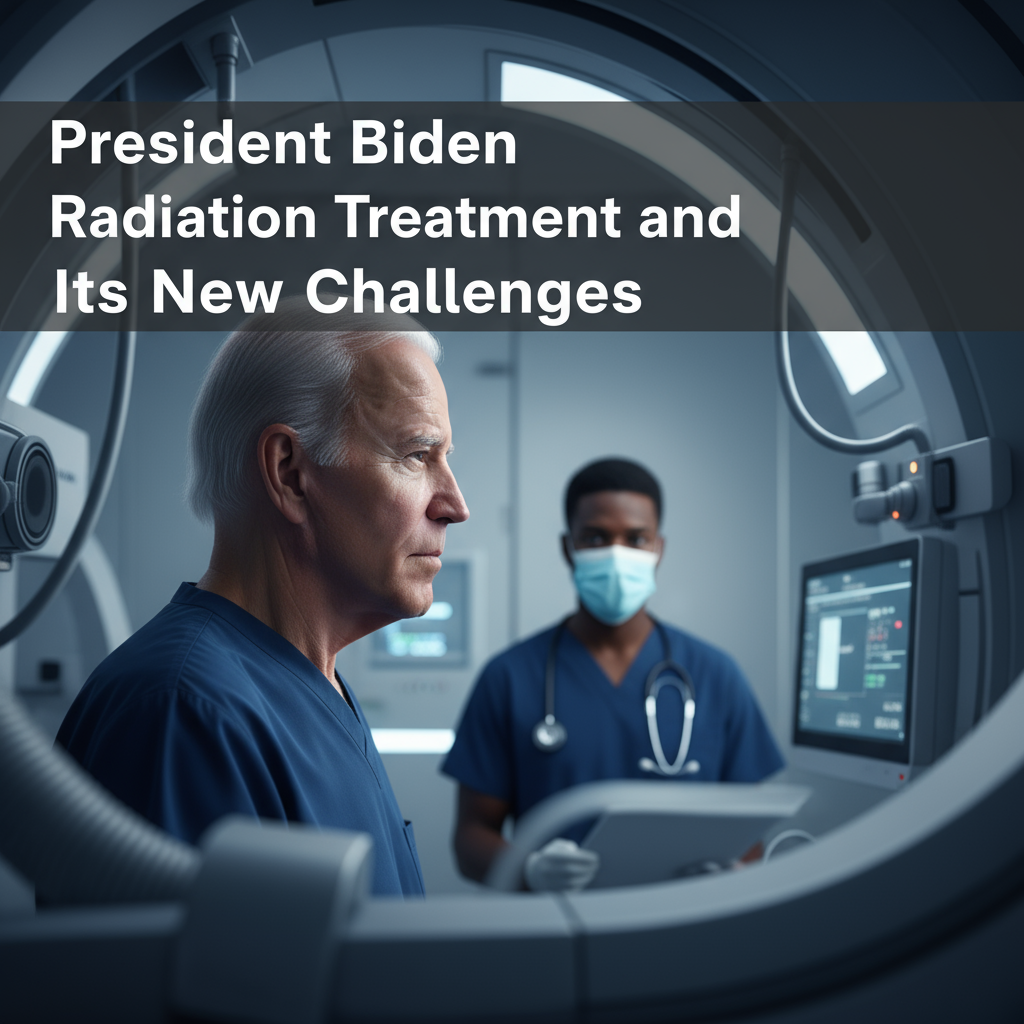President Biden Radiation Treatment and Its New Challenges
Estimated reading time: 5 minutes
- Former President Biden has begun radiation therapy and hormone treatment for prostate cancer.
- His treatment plan includes a combination of radiation therapy lasting five weeks.
- Biden previously underwent Mohs surgery for skin cancer in September 2025.
- His public disclosure of his diagnosis has helped elevate the conversation surrounding cancer.
- The challenges of advanced disease highlight the importance of support systems in cancer management.
Table of Contents
- Current Treatment Protocol
- Previous Cancer Treatments
- Public Disclosure and Response
- The Challenge of Advanced Disease
- Conclusion
Current Treatment Protocol
As part of his cancer care, Biden’s treatment plan includes a combination of radiation therapy and hormone treatment. According to reports, this radiation therapy is anticipated to last five weeks, marking a significant escalation from his previous treatment regimen. In the months leading up to this point, Biden had been managing his condition primarily through hormone medication in pill form, a treatment he publicly acknowledged when addressing his health concerns earlier this year (source).
This comprehensive approach underscores the seriousness of Biden’s prostate cancer, especially given the aggressive nature of his diagnosed condition, which has already metastasized to his bones. The dual strategy of hormone therapy paired with radiation is standard practice in managing advanced cases of prostate cancer and reflects the increasing complexity of cancer treatments today.
Previous Cancer Treatments
Biden’s journey with cancer is not limited to his current diagnosis of prostate cancer. In September 2025, he underwent Mohs surgery for skin cancer. This surgical procedure, known for its precision in excising skin cancer while preserving healthy tissue, resulted in a visible bandage on his forehead during subsequent public appearances. Fortunately, according to the physician’s memo post-surgery, all cancerous tissue was successfully removed, and no further treatments were deemed necessary for the skin cancer (source).
These previous experiences with cancer highlight the reality many individuals face when managing multiple health concerns. For Biden, the recent diagnosis of prostate cancer following skin cancer treatment presents a daunting combination of challenges that he must now navigate.
Public Disclosure and Response
When Biden first disclosed his diagnosis of prostate cancer in May, he and his team emphasized transparency regarding his health. The announcement resonated deeply with many Americans as it came with a sense of vulnerability and a call for solidarity. Biden shared an emotional message on social media platform X, expressing, “Cancer touches us all. Like so many of you, Jill and I have learned that we are strongest in the broken places. Thank you for lifting us up with love and support” (source).
His public acknowledgment of the diagnosis was not only a personal revelation but also served to elevate the conversation surrounding cancer. By sharing his journey, Biden humanized the disease, making it relatable to countless individuals and families who are simultaneously battling cancer or supporting loved ones through similar struggles.
The Challenge of Advanced Disease
The challenges surrounding Biden’s prostate cancer diagnosis are significant. The fact that the cancer had already metastasized to his bones signifies a late stage of the disease, which necessitates a more aggressive treatment approach. Advanced prostate cancer often requires ongoing and multifaceted treatment strategies to manage the disease effectively.
Combining radiation therapy with hormone treatments is a commonly accepted method for alleviating symptoms and slowing disease progression in advanced prostate cancer cases. The five-week radiation protocol indicates an intensive treatment schedule, reflecting the need for sustained and targeted efforts in tackling this aggressive form of cancer.
Managing cancer is a highly individualized journey that often involves various specialists, treatment options, and ongoing assessments. In Biden’s case, it raises awareness about the realities many patients face and the importance of support systems—both personal and societal.
Additionally, Biden’s treatment journey brings to light the broader implications of health in leadership roles. The evolving political landscape in the United States often intersects with health narratives, underscoring the significance of transparency, empathy, and public discourse surrounding health issues.
Conclusion
As former President Joe Biden embarks on this critical phase of radiation therapy and hormone treatment, he not only confronts the challenges posed by his diagnosis but also continues to shape the dialogue around cancer care. His public acknowledgment of the illness fosters a sense of solidarity among those affected by cancer and elevates the conversation about health, treatment options, and the necessary resilience in the face of adversity.
The coming weeks and months will be crucial not only for Biden’s health journey but for the public perception of cancer treatment modalities. As the discourse continues to unfold, it is essential to remain informed and supportive, showcasing the power of community during challenging times.
For more trending news, visit NotAIWorld.com.
FAQ
Q: What type of cancer is Biden currently being treated for?
A: Former President Biden is currently undergoing treatment for prostate cancer.
Q: What treatments is Biden receiving?
A: Biden’s treatment plan includes radiation therapy and hormone treatment.
Q: How has Biden’s public disclosure affected the conversation around cancer?
A: His acknowledgment of the diagnosis has elevated awareness and fostered solidarity among those affected by cancer.
Q: What previous cancer treatments has Biden undergone?
A: Biden previously underwent Mohs surgery for skin cancer in September 2025.
Q: Why is Biden’s health journey significant for the public?
A: It raises awareness about cancer care and emphasizes the importance of transparency and support systems in managing health challenges.
